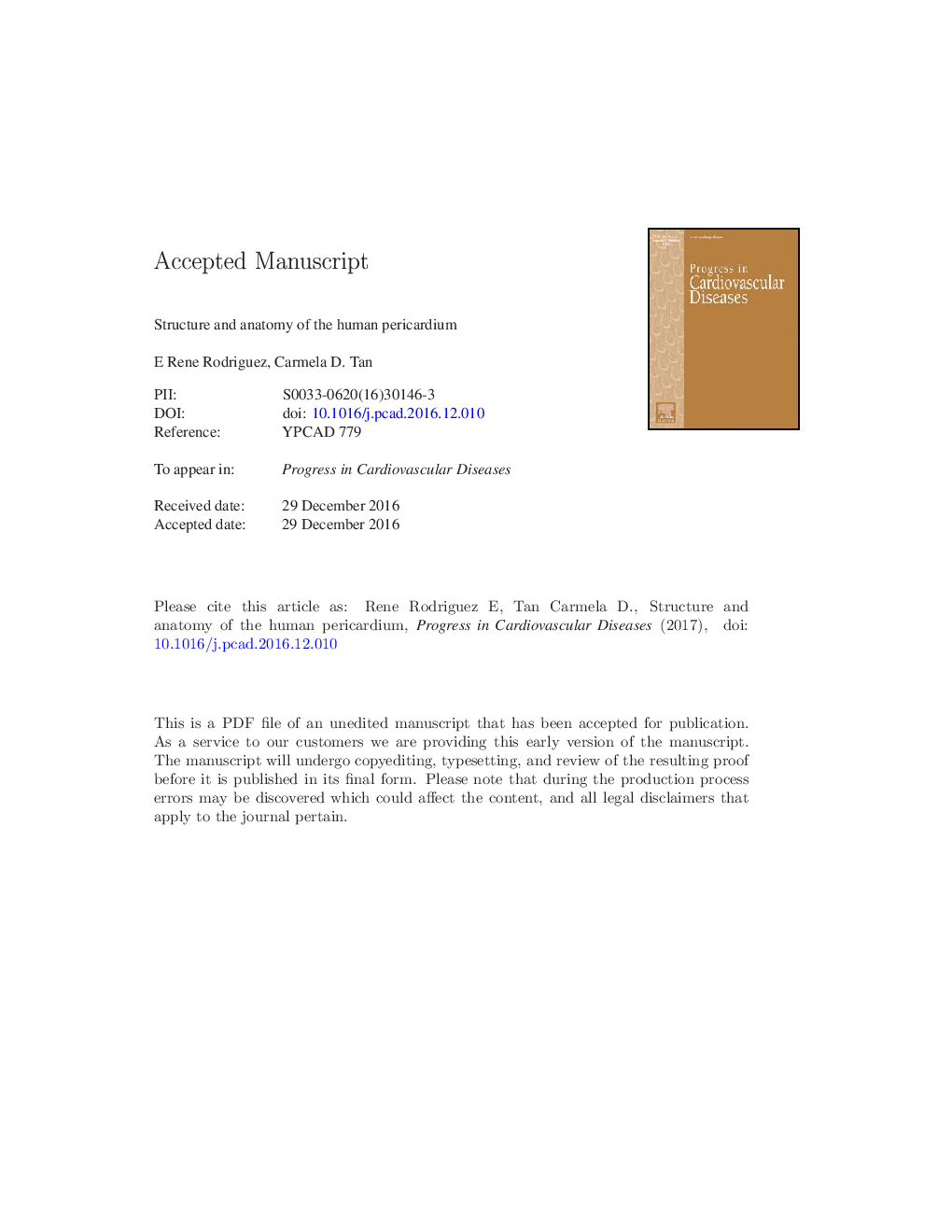| Article ID | Journal | Published Year | Pages | File Type |
|---|---|---|---|---|
| 5619618 | Progress in Cardiovascular Diseases | 2017 | 34 Pages |
Abstract
The normal gross anatomy and light microscopy of the human pericardium are presented in detail that allows easy correlation with current cardiac imaging modalities. The anatomical structures of the parietal pericardium are shown from its mediastinal surface, including its ligaments to the sternum, diaphragm and vertebral column. The attachments of the parietal pericardium to the great vessels showing the intrapericardial location of the root of the aorta and pulmonary artery are documented. Also the attachments of the parietal pericardium to the venae cavae and the pulmonary veins are illustrated in detail. The internal anatomy of the parietal pericardium emphasizing the oblique and transverse sinuses is explained. The microscopic differences between the structures of the parietal pericardium and visceral pericardium (epicardium) are shown as the basis that allows understanding the spectrum of adaptation of the pericardium to diverse pathologic processes. However, the pathology of the pericardium is not discussed in this review.
Keywords
RIPVRPARPVRAALPVIVCLIPVRSPVSVCLSPVLPAiAsLAAright pulmonary veinH&EAortaAnatomyEpicardiumsuperior vena cavaright ventricleleft ventricleAortic valveLeft atriumRight atriumright atrial appendageleft inferior pulmonary veinleft superior pulmonary veininteratrial septumright pulmonary arteryLeft pulmonary arteryleft atrial appendageLADHematoxylin and Eosinright superior pulmonary veinright inferior pulmonary veinInferior vena cavaPericardiumleft anterior descending coronary artery
Related Topics
Health Sciences
Medicine and Dentistry
Cardiology and Cardiovascular Medicine
Authors
E. Rene Rodriguez, Carmela D. Tan,
